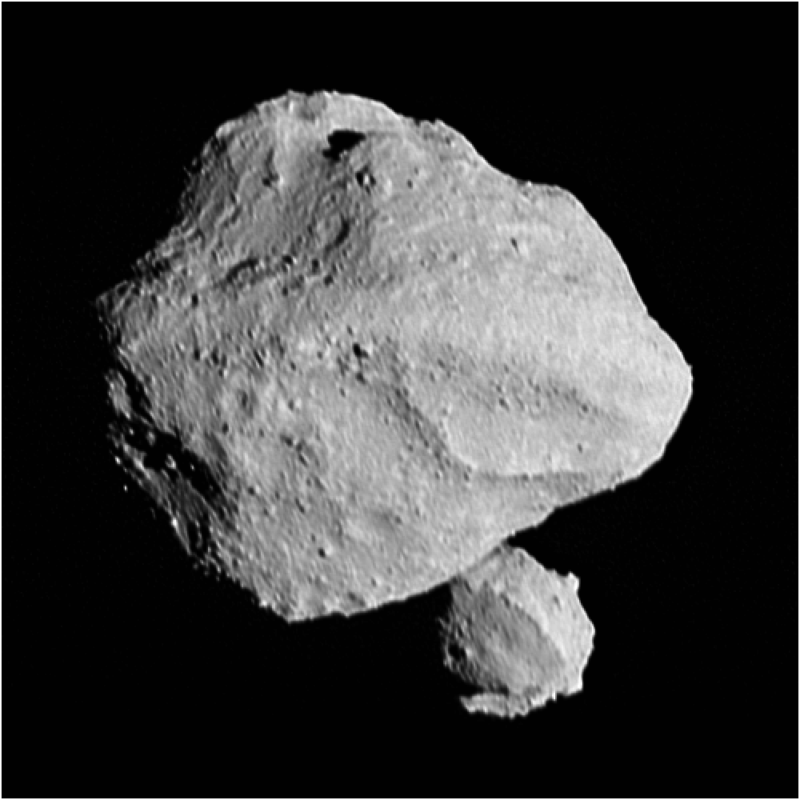
Good morning. It is November 3, and today we have a treat from NASA. A couple of days ago I wrote about NASA's Lucy mission preparing to fly by its first asteroid target, the small main-belt asteroid Dinkinesh. Now, it is complete.
This flyby was not so much about the science but rather proving the capability of the spacecraft to point its instruments and take data while whizzing by an asteroid. In this case, Lucy zoomed by Dinkinesh at a speed of 10,000 mph (4,470 meters per second). And, as can be seen from the first images returned by Lucy, the spacecraft succeeded.
In fact, the spacecraft surprised astronomers by revealing that Dinkinesh is not a single asteroid but rather a binary pair. From a preliminary analysis of the first available images, according to NASA, the team estimates that the larger body is approximately 0.5 miles (790 m) at its widest, while the smaller is about 0.15 miles (220 m) in size.
"We knew this was going to be the smallest main-belt asteroid ever seen up close," said Keith Noll, Lucy project scientist from NASA’s Goddard Space Flight Center. "The fact that it is two makes it even more exciting. In some ways these asteroids look similar to the near-Earth asteroid binary Didymos and Dimorphos that DART saw, but there are some really interesting differences that we will be investigating."
Have a great weekend, everyone, even if it probably won't be as great as the Lucy mission scientists' as they continue to downlink data from the asteroid encounter.
Source: NASA.
Do you want to submit a photo for the Daily Telescope? Reach out and say hello.
Reader Comments (96)
View comments on forumLoading comments...